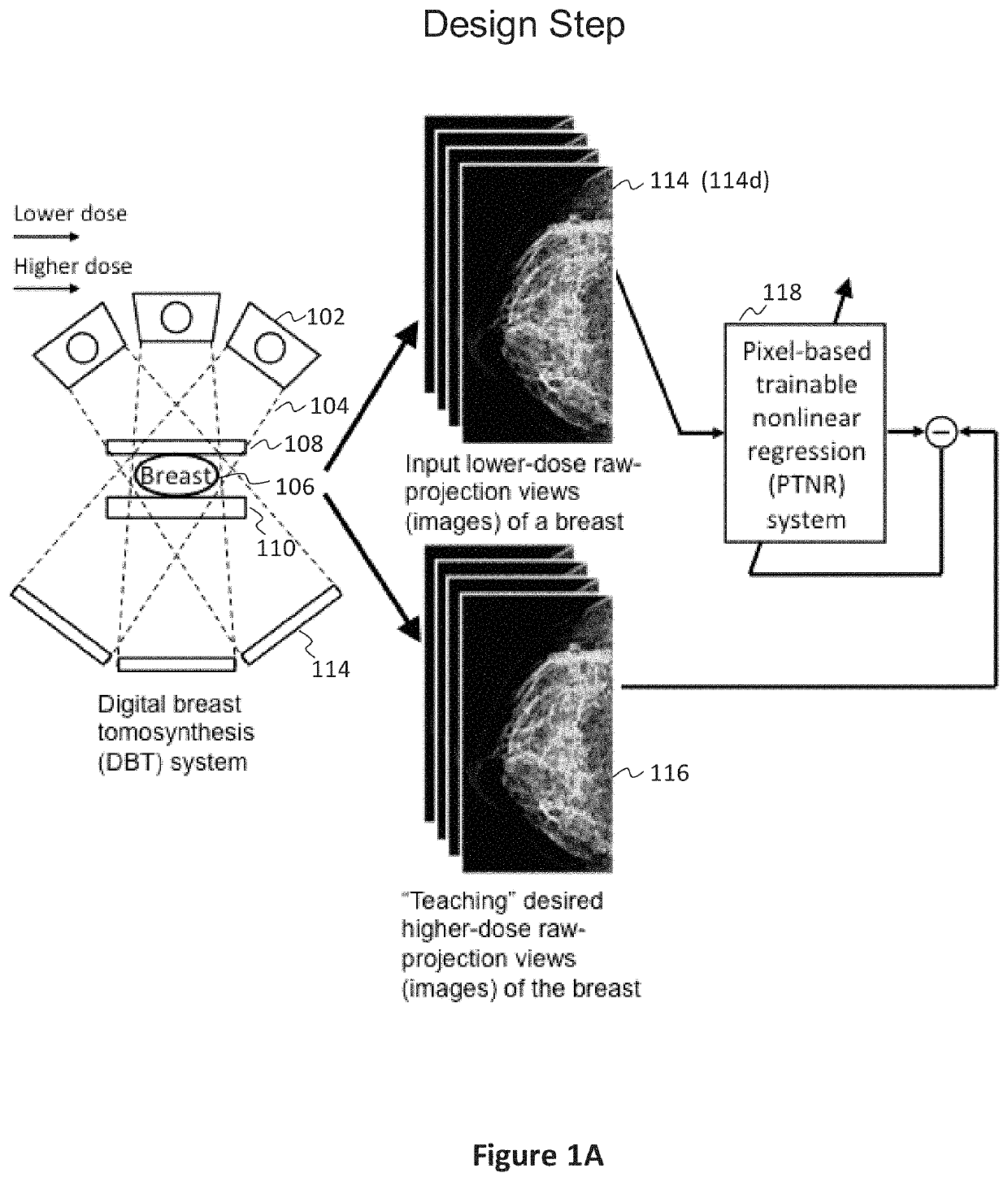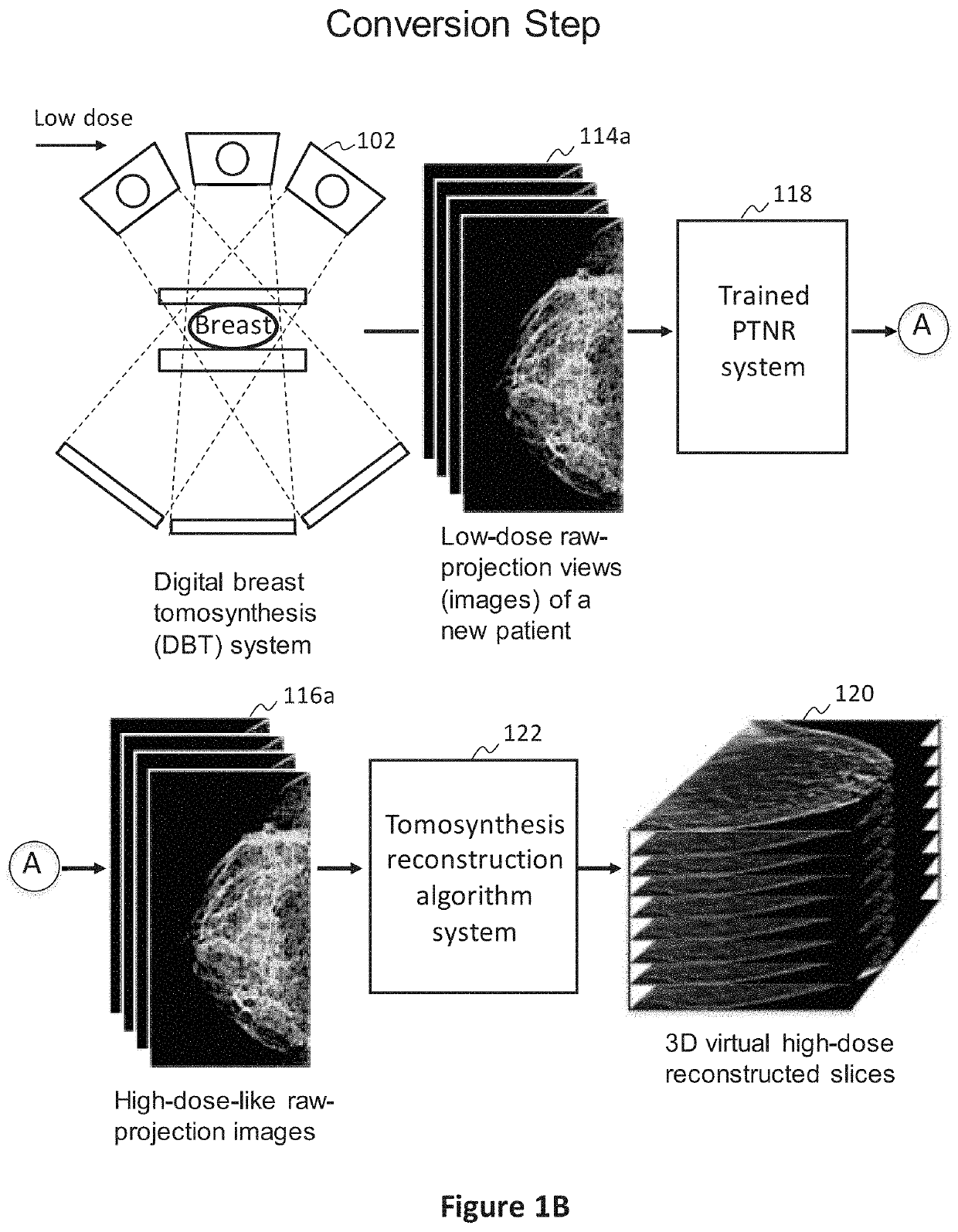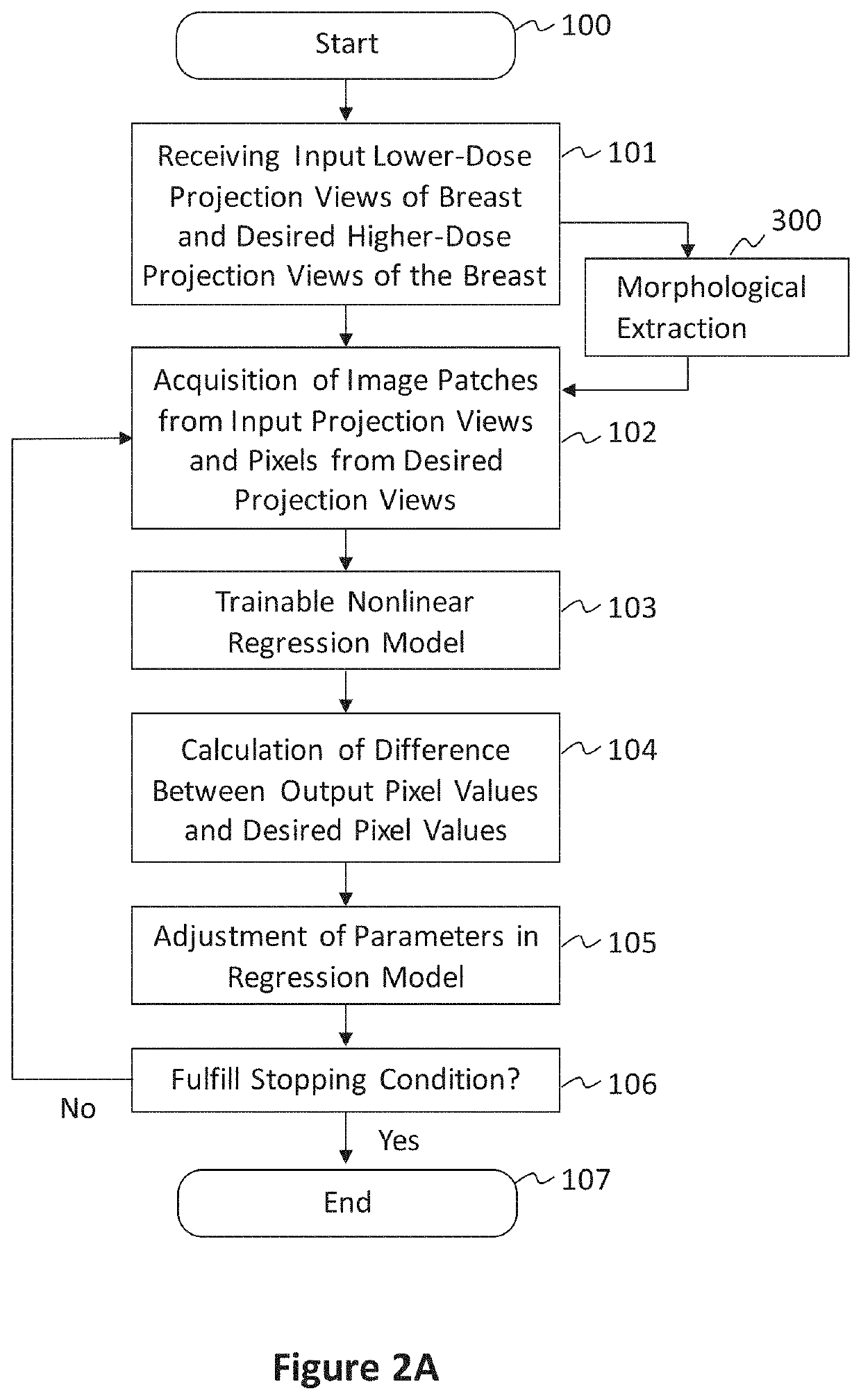Converting low-dose to higher dose 3D tomosynthesis images through machine-learning processes
a machine learning and tomosynthesis technology, applied in image enhancement, instruments, applications, etc., can solve the problems of high breast density, increased cumulative radiation exposure and lifetime attributable risks of radiation-induced breast cancer, and high breast density, so as to achieve less noise, less artifacts, and high quality
- Summary
- Abstract
- Description
- Claims
- Application Information
AI Technical Summary
Benefits of technology
Problems solved by technology
Method used
Image
Examples
Embodiment Construction
[0077]In preferred examples, the systems and methods described in this patent specification use a pixel-based trainable nonlinear regression (PTNR) that converts lower-dose raw projection views (as a form of images) of a breast to higher-quality, higher-dose-like raw projection views (images) of the breast. Lower-dose raw projection views (images) are of lower image quality, with more noise, than the higher-quality, higher-dose-like raw projection views (images). Higher-dose-like raw projection views (images) look like real, high-dose raw projection views (images) that are of higher image quality with less noise or artifacts than the lower-dose raw projection views (images). The PTNR system uses a trainable nonlinear regression (TNR) model that processes pixels in patches (or regions) in raw projection views (images). There are two main steps associated with PTNR: (1) a design step to determine the parameters in PTNR by using designing pairs of lower-dose (lower image quality) and h...
PUM
 Login to View More
Login to View More Abstract
Description
Claims
Application Information
 Login to View More
Login to View More - R&D
- Intellectual Property
- Life Sciences
- Materials
- Tech Scout
- Unparalleled Data Quality
- Higher Quality Content
- 60% Fewer Hallucinations
Browse by: Latest US Patents, China's latest patents, Technical Efficacy Thesaurus, Application Domain, Technology Topic, Popular Technical Reports.
© 2025 PatSnap. All rights reserved.Legal|Privacy policy|Modern Slavery Act Transparency Statement|Sitemap|About US| Contact US: help@patsnap.com



